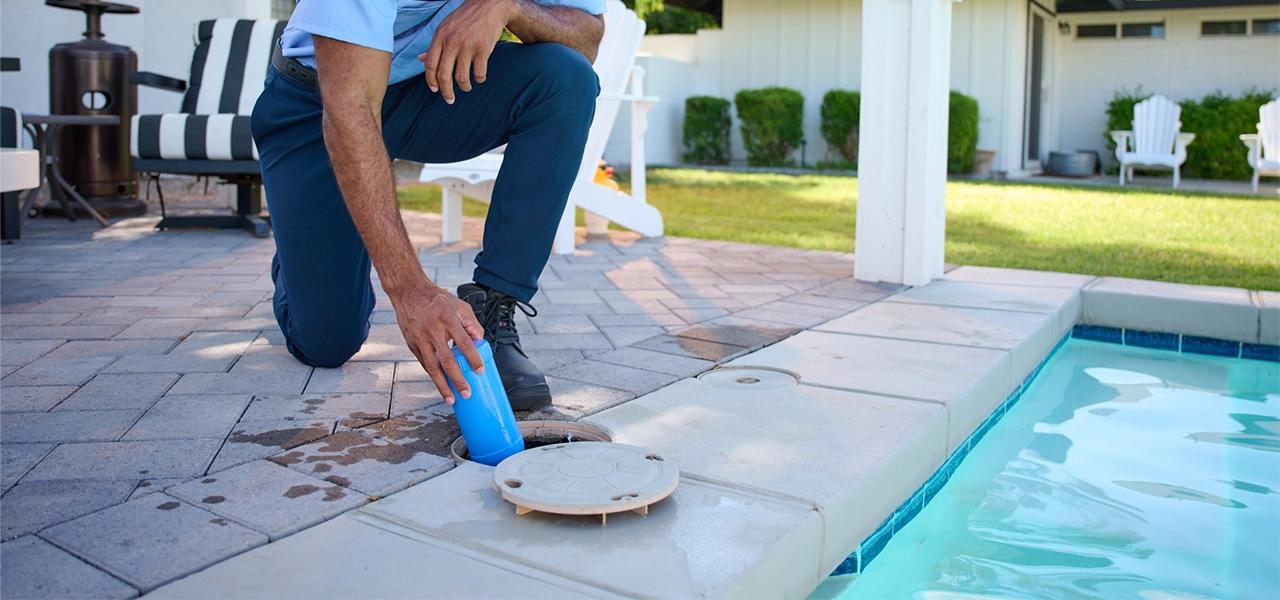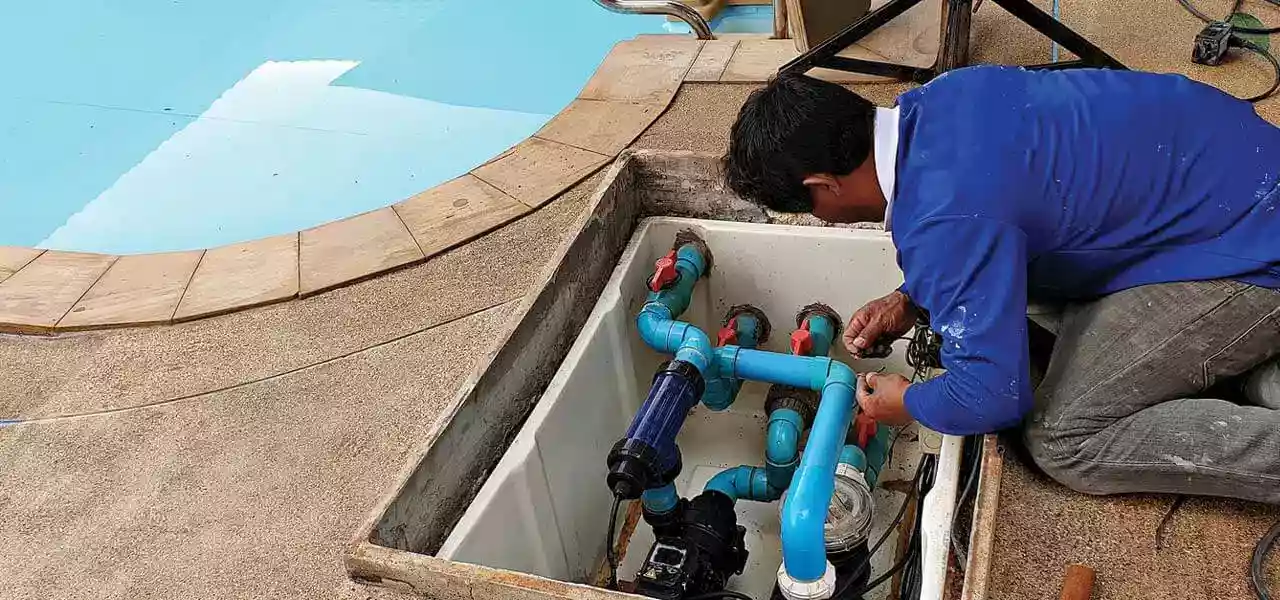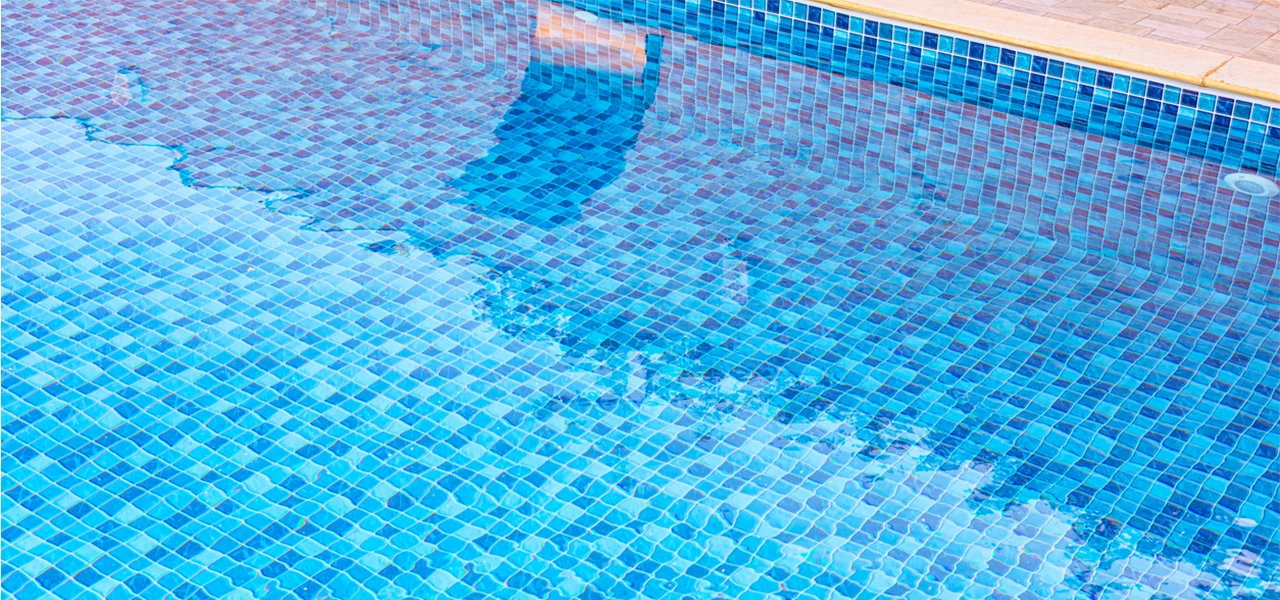Swimming pool plugs come in all shapes, sizes and colors, and are used for many different purposes around the pool and for the pool equipment. Let’s look at the many types of plugs used on swimming pools and some of their uses.
1. Winterization Plugs
The most common winterization plugs are rubber plugs with two stainless steel washers and a bolt in the center. These are most commonly referred to as expansion plugs, because they expand as you tighten the stainless steel or nylon wing nut on top. These pool plugs are commonly available in 14 sizes, from 00 (fits 1/4-inch holes) to 13 (fits 2-2.5 inch holes).
Extended plugs are expansion plugs with an extra long bolt to allow easier plugging of non-threaded pipes and pipes that are cut off at an angle, like the common 3/4-inch return line in the wall. A double plug, used on old style Sylvan pools and some Anthony pools, is used for winterizing a combination skimmer, when the main drain pipe is tied into the pipe beneath the skimmer. These are also known as combination plugs.
Used as pipe plugs to plug skimmers, returns, cleaner lines, to prevent water from entering the pipes during winter, expansion plugs have other uses, such as pressure testing pool lines or other methods of leak detection, or stopping water flow from the pool when equipment repairs are made.
Expansion plugs
These plugs can isolate certain lines or abandon certain lines known to be leaking until repairs can be made. They also come in handy to allow pressure to build up and release in a pipe suspected to be clogged, creating a water hammer effect to help move debris stuck in skimmer lines.
Gizzmos
Gizzmo plugs are a combination plug used for skimmers. They are long plastic tubes that thread into 1.5-in. and 2.0-in. skimmers to serve as a plug to keep water out (recommended to wrap Gizzmo threads with Teflon tape). Their second purpose is to absorb ice expansion inside the skimmer. As rainwater builds up inside the skimmer body and freezes during the winter, it can crack the skimmer body. The gizzmo breaks up the ice pack in the skimmer and collapses inward to absorb the strong force of expanding ice. Gizzmos come in two lengths, 12-inch and 16-inch.
2. Filter Plugs
Different manufacturers use different plugs on their pool filters. Many don’t use a plug at all, instead using a cap. The difference between a plug and a cap? Plugs have male threads, whereas caps have female threads.
Pentair sand filters use a two stage plug with their common 1/4-inch Butterfly Plug to allow the filter to drain water for winterization or repairs. This 1/4-inch plug has a small O-ring that is important to maintaining a proper seal. However, three wraps of Teflon tape around the plug threads in place of the O-ring will usually seal the plug. Remove the entire assembly from the tank by mistake, and you’ll start to drain sand too.
Most other sand filters use a plastic cap that threads onto a drain tube. A cap gasket or O-ring is used on these caps to make a seal. Missing the gasket? You can use silicone, wrapped over three times with Teflon tape to substitute, in most cases. Filter drain caps vary in proportion to the drain tube they attach to and can vary from a 3/4-inch cap to a 2-inch cap for larger sand filters.
D.E. and cartridge pool filters most often use a 1.5-inch or 2-inch threaded plug to drain the tank. Hayward SP1022C plug (1.5-inch threaded) can be used as a replacement filter plug for many filters, with the exception of those filters using a 2-inch threaded plug on their DE filters. Some filters use a tapered threaded plug as opposed to a gasketed plug, and with these, be careful not to overtighten the plug, which may cause the underdrain assembly or tee fitting to crack.
3. Pump Plugs
Almost all swimming pool pumps use a 1/4-inch threaded plug, some with an O-ring and some without an O-ring. Those without the O-ring should use three wraps of Teflon tape to create a good seal. Old Teflon tape should be removed first; if years of Teflon tape build up, this can increase the size of the plug too much, which may crack the pump housing. You can substitute most any kind of 1/4-in. threaded plug for another; they are fairly universal, as long at they are NPT, or National Pipe Thread design. If your pump plug uses an O-ring, however, you may have trouble getting a tight seal when using a 1/4-in. plug without an O-ring.
Pool pumps usually have two pump drain plugs: one in the front, at the base of the hair and lint strainer or pump pot, and another plug further back toward the motor to drain the volute, or impeller housing.
4. Heater Plugs
Pool heater plugs are most often 1/4-inch plugs, and you will find one on both sides of the heat exchanger or on the front header, where the pipes come in and out and on the rear return header. Cast-iron headers or bronze headers use a 1/4-inch brass plug or butterfly valve plug, whereas the modern thermoplastic headers will use a plastic plug, usually with an O-ring. Brass plugs can be lubed with green lube, like Aqua-Lube, to keep the rust from building up on the threads of the cast-iron headers. These headers can be tapped, with a number 20-1/4-inch tap, if internal rust becomes a problem.
5. Test Plugs
Test plugs look similar to winterizing plugs, except that they are not tapered, the sides are straight, and they have oversized wing nuts to allow for strong tightening. Some are smooth, some are ridged and some are inflatable. They are used primarily for pressure testing plumbing, because their straight sidewalls allow for a more secure plugging of the line; tapered plugs can push out of the line under high pressure. Another type of test plug has a hole that runs through the center of the plug, with a valve stem style threaded top. These plugs are used to push compressed air into the pipe for the purpose of pressure testing or for blowing out the plumbing lines for winterization.
6. Hydrostatic Plugs
These are available in two types: spring loaded automatic and manual. Spring loaded plugs are referred to as hydrostatic relief valves and are commonly inserted into the main drain pot, directly in the bottom center hole. The manual type of hydrostatic plug is commonly a Hayward SP1022B plug. Both manual and automatic hydrostats are meant to allow water from a high water table to enter the pool. This prevents floating or popping of the pool shell due to intense hydrostatic pressure, when an in-ground gunite pool is drained.
7. One-Way Plugs
The Anderson Duck Plug or the Winter One-Way Plug are examples of plugs that are used during pool closing winterization. Air is blown in one direction through the plug, which pushes the water in the pipe out through the plug and seals up to prevent water from reentering the pipe after the water is expelled. A plastic cap (not shown) is then pushed over the opening as added protection against water coming in.





Hello Roy, our heater drain plug failed and as far as I can tell, the RayPak RP2100 Heater has a cast iron header, but had a plastic plug. We plan on replacing it with a brass plug, but I’m concerned for the reason for it failing in the first place. Can you explain? Should I search for another issue that may need fixing? Thanks,
Hi, the cast iron headers, the threads on the drain plug ports can become rusted shut if not plugged or lubed during winter. The plastic Raypak plugs are not for the cast iron header, you are correct, a brass plug is used. Go to a hardware store and buy a #20 Tap, might cost $15+, and you will use it to remove the rust, and re-cut the threads. Then while your at the hardware, pick up a 1/4″ brass NPT plug. Next winter, leave the plug out, but smear Aqua Lube or Magic Lube Kevlar (green) lube over the threads, or regular Teflon lube if you have nothing else. THis will stop rust from forming over the threads.
I have a steel pool built in the 1960’s. I would like to paint it but the bottom part by the drain continues to draw water in after I pump it out. It’s the relieve valve I’m thinking of a putting plug in that I could temporarily put in it until I paint it. What do you recommend
Thanks
Hi Lee, you could unthread the spring loaded hydrostatic relief valve and plug it temporarily, but if you get wet weather, I’d open it again. I’d also want to fast track the painting effort after plugging it, because you don’t know how much pressure will build up under the pool, and until it’s full again, there is the potential to ‘pop the pool’ out of the ground, if water pressure builds so much and has no where else to go. Not likely, but it does happen on rare occasion. So, plug, dry and paint quickly. Acrylic will give the best turnaround time, can drain, paint and fill in 72 hours, but epoxy will give longer life, but you need 6-7 days.
my last pool person put in an expansion plug in, I never saw one before. I’m having trouble taking it out. Took of wing nut, washer, long pipe like thing, felt the rubber come loose but there’s still something down there holding it in. HELP
Bill, grab it with straight pliers, and pull hard, wiggling just a little, it should pop out.